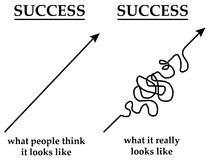Phonemic Awareness
Phonemes are the smallest part of sound in a spoken word. For example, if you change the phoneme /h/, in the word ‘hat’, for the phoneme /c/ you make the word ‘cat’. Therefore, phonemes make a difference in the word’s meaning. Phonemic awareness is not phonics– that’s a different puzzle piece. Phonemic awareness is understanding that the sounds of spoken language work together to make words. As seen above the phonemes /h/a/t/ work together to make the word ‘hat’. This is about hearing and processing sounds. Phonemic awareness is a subcategory of phonological awareness.
Children who have phonemic awareness skills are likely to have an easier time to learn to read.
| Phonemic awareness is… | · … the ability to hear, identify and manipulate individual sounds –phonemes- in spoken words |
| Phonemic awareness is important because… | · it improves children’s word reading and reading comprehension.
· It helps children learn to spell |
| Phonemic awareness can be developed through a number of activities… | · Identify phonemes
· Categorize phonemes · Blend phonemes to form words · Segment words into phonemes · Delete or add phonemes to form new words · Substitute phonemes to make new words |
| Effective phonemic awareness instruction… | · … When children are taught to manipulate phonemes by using letters of the alphabet
· … When instruction focuses on only one or two types of phoneme manipulation |
Phonological Awareness
Phonological awareness identifies and manipulates larger parts of the spoken language, such as words, syllables and onsets and rhymes as well as phonemes.
So when children:
- identify and make oral rhymes- “The cat sat on the mat”
- identify and work with syllables –clap syllables of their name :” An-drew”
- identify and work with onsets and rimes – the first part of sip is s-/the last part of win is –in
- identify and work with individual phonemes is spoken words – the first sound in sat is /s/.
 Training
Training
Training is the key to breaking the chains that keep children from successfuly learning to read. Many children acquire these skills effortlessly, if they were raised by adults who talked to them constantly, played word games incessantly and read aloud nursery rhymes and poetry at bed time. Some have an innate ability to process sounds/language; however, there are many others who find these skills difficult. This skill is crucial to acquiring the English language code necessary to master reading. Children, who lack these skills, need to be trained in developing them. Children do not outgrow phonological awareness deficits or develop phonological awareness skills with physical maturation (Liberman & Shankweiler, 1985) cited in “Teach Them All to Read” p.33. These skills have nothing to do with IQ levels.

Success in acquiring phonological Awareness comes from teaching it systematically, explicitly within a supportive environment. Attention in training blending, segmenting , auditory processing and code knowledge (alphabet sounds) are really important in this process.

The sweet taste of success is very powerful. The good news is that not only can children overcome it by training, but that parents can help them do it. Carmen and Geoffrey MacGuiness in their book ‘Reading Reflex- the foolproof phono-graphix method for teaching your child to read” do just that. I found this resource to be pretty empowering.
With Love and Gratitude
Alda
Sources:
Teach Them All to Read by Elaine McEwan
Reading Reflex by Carmen and Geoffrey McGuinness / www.readamerica.net


